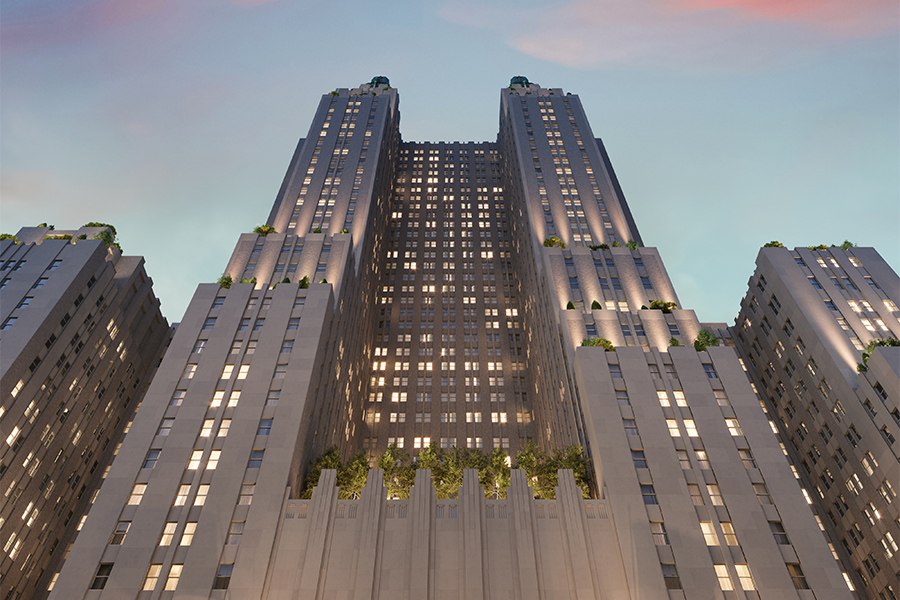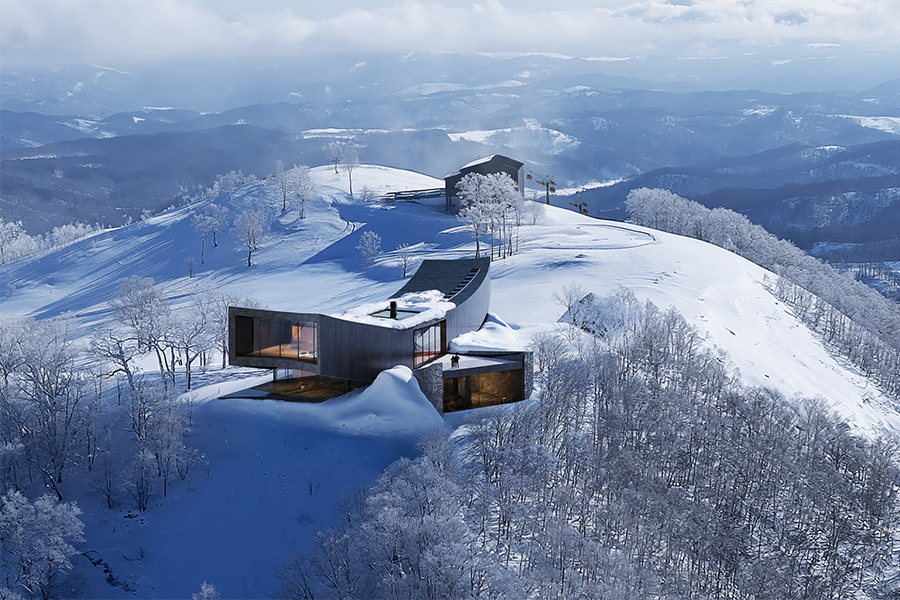Formerly serving as both a community center and the home of the Japanese Consulate, Hotel Kabuki, a Joie de Vivre Hotel, is an emblem of San Francisco’s Japantown. Adjacent to the East and West Japan Center Malls and close to Kabuki Springs & Spa, its ties to the community run deep. For last fall’s $30 million renovation of the 225-room property, Mark Zeff, owner of his eponymous Brooklyn, New York-based studio, was especially sensitive to the notion of “repositioning and rethinking the life of a hotel without going crazy and ripping it apart and starting again,” he says. This thoughtfulness translates to subtle references to Japan throughout. Zeff also was delighted when it became clear the Japantown Foundation, which preserves and celebrates the neighborhood’s history, “didn’t expect or want simply another hotel updated with traditional décor,” he adds.
The circa-1960s façade of the building, which comprises the original tower and an annex constructed later, remains intact, but the mezzanine was demolished to make way for 19-foot-tall ceilings in the lobby. “Sunlight from the Japanese garden pours into the space now, which used to be gloomy and claustrophobic,” notes Stacie Meador, the firm’s director of hospitality design and lead designer on the project.
Amid a backdrop of restrained blond and blackened wood, guests are greeted with a custom rug that delineates the art of shodo calligraphy and a minimalist rough-hewn oak wood reception desk with Japanese butterfly joinery details. Standing behind and wrapping the ceiling above the seemingly simple piece is a captivating vintage factory-paned window installation featuring a historic map of the San Francisco Bay, blown up and backlit behind the glass. Beyond reception, the bar’s shou sugi ban wood plank cladding pays tribute to yakisugi, a Japanese preservation technique in which cypress is heated with fire until charred, “creating a beautiful, almost crocodile-textured wood,” Meador adds. Above, a Douglas fir crossbeam structure accentuated by hot-rolled steel brackets graces the ceiling in homage to old Japanese farmhouses.
Abandoning heavy-handed ideas of “kimonos and geisha motifs everywhere,” says Meador, guestrooms with gray accent walls and stitched leather furniture are divided between two design schemes. In one, wallcoverings illuminate vintage Japanese newspaper print; the other brings retro sumo wrestling cards to life in a wallcovering that lines the closet. Artwork, a mélange of Japanese graphics from the 1920s, ’30, and ’40s, and black and white photos chronicling San Francisco’s heady counterculture movement, make these accommodations feel “fresh, fun, and happy, like it’s someone’s own studio,” says Meador.
There are further nods to both San Francisco and Japan, bringing both cultures in conversation with each other. Consider the headboards and drapery, which embrace the Japanese craft of shibori—the twisting, folding, and dyeing of cloth that also calls to mind the city’s own love for tie-dye during the hippie era.



